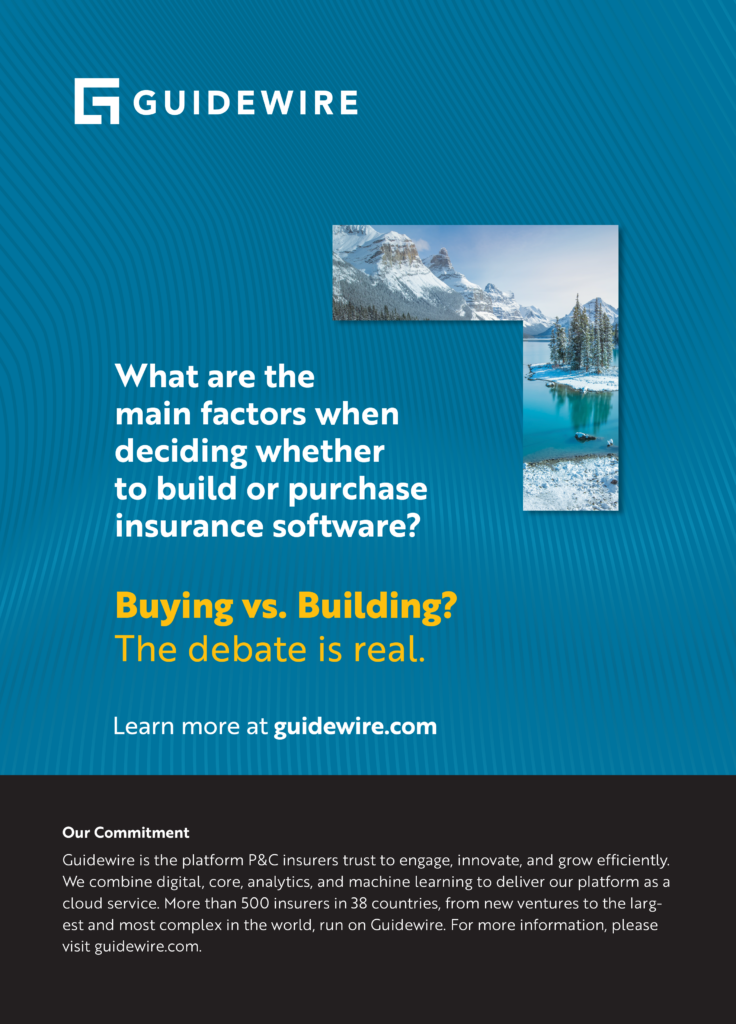Leo Holesgrove, Guidewire representative for Southern Africa.

The build versus buy debate is an ongoing topic for many companies, especially in the financial services industry, where there is a lot of pride in doing things internally.
However, due to black swan events like floods, power shortages, and riots, which have resulted in smaller margins and difficulty in discussions with reinsurers, insurers are now considering a more agile approach that can increase efficiency and agility.
One of the biggest drivers to consider a customer’s business case for buy rather than build is futureproofing one’s business. Insurers need to consider using technology, data, and available talent to increase agility and efficiency across the full life cycle. Using embedded analytics to turn your core system into a system of insight can provide the best customer experience possible. Other drivers include speed to market, efficiency in paying claims, empathy, and support, increasing profitability, clear retention strategies, and empowering business users internally.
“One of the biggest drivers to consider a customer’s business case for buy rather than build is futureproofing one’s business”
The decision to build versus buy depends on each company’s frame of reference and their phase in the life cycle. However, business continuity and disaster recovery have raised the ante, and companies need to future-proof themselves regarding scale, innovation, and expansion inside and outside of their borders.
In evaluating build versus buy, functional depth, data in and out, and support are the three main categories to consider. Building or buying the most functionally robust system to meet changing business or market demands is a consideration for functional depth. Easily managing how data is ingested and dispersed between the core systems and the broader customer ecosystems is a challenge for many companies that can be addressed through buying rather than building. Whether the system is easy to maintain and innovate on is also a consideration.
Software as a service (SaaS) is changing the competitive landscape for companies, especially smaller players that lack the financial resources to build or buy expensive platforms.

Buying vs. Building?
The debate is real.
What are the main factors when deciding whether to build or purchase insurance software?
One of the biggest concerns for companies considering SaaS solutions is data residency. Many companies believe that they need to keep their data within their country’s borders and are hesitant to move to cloud-based solutions. However, Guidewire has been working with AWS (Amazon Web Services) and the Microsoft platform to offer SaaS solutions to its clients. With AWS coming to South Africa, Guidewire has been able to transform its value proposition from delivering software to customers to a SaaS offering that makes it easier for clients to innovate and drive agility.
Guidewire’s SaaS offering enables clients to continually innovate and focus on what they do best while leaving the details of software maintenance to Guidewire. We provide support for running and operating the software, including installation and functioning, network storage, backup configuration of hardware platforms, operating systems, database, application updates, and other tasks related to software maintenance. This allows clients to focus on their customers and innovation, creating products quicker and getting them to market faster.
Moving to a SaaS solution is not an easy decision, but it is something that needs to be discussed and worked through in the initial consultation process with the client. It can be challenging to give up control in a build environment, but the benefits of SaaS, including scale and flexibility, outweigh the initial challenges. Companies can focus on supporting business, being more innovative, and creating products quickly, increasing their profit lines.
Guidewire’s move to SaaS solutions is a testament to the growing popularity of cloud-based solutions in the insurance industry. By working with AWS and other cloud providers, we are enabling clients to leverage the power of cloud-based solutions while maintaining data residency within their countries. As more companies move to cloud-based solutions, the competitive landscape will continue to change, creating new opportunities for smaller players to thrive.
In conclusion, the buy versus build debate is an important one for companies to consider, especially in the financial services industry. Insurers need to future-proof their businesses to increase efficiency, agility, and profitability.
Understanding the drivers and categories to consider when evaluating build versus buy can help insurers make informed decisions that align with their business strategies.

